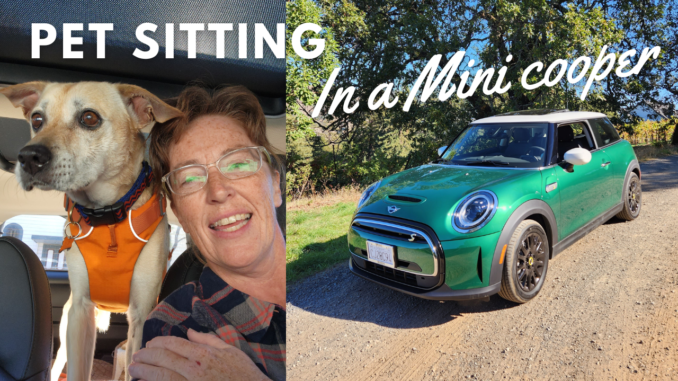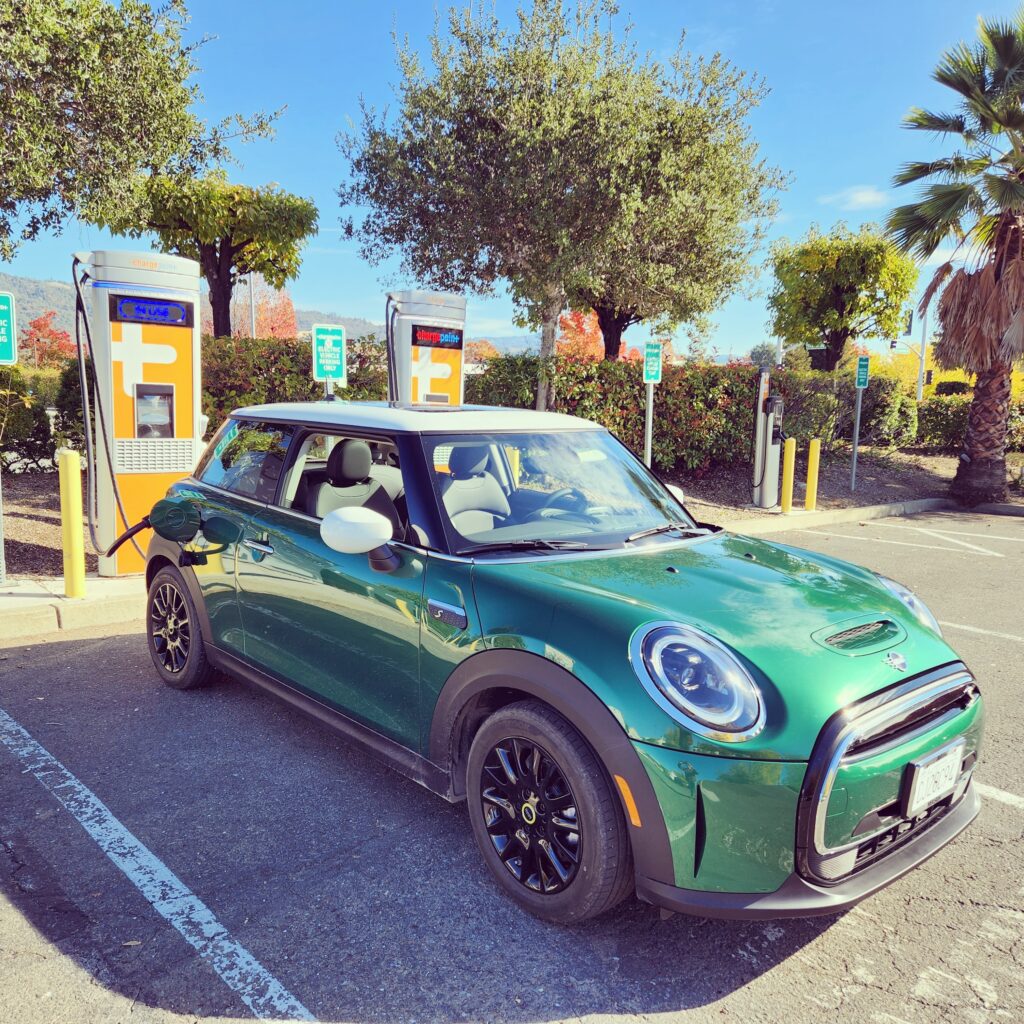
I bought a Mini Cooper SE for my pet sitting business. Is it practical? Is it fun? Is it a hassle to charge? Learn all of this and more!
Going green
After 11 years and nearly 200,000 miles, it was time to replace my trusty Toyota hatchback. I was curious about electric cars, but I’m not an early adopter so wasn’t really interested in buying one in the past. I’ve always loved the Mini Cooper, so when I found out that they have an all-electric hatchback I decided it was time to go green.
Why the Mini?
I’ve wanted a Mini Cooper for years, but wasn’t sure I was ready to move away from Toyota. As a pet sitter I drive a lot and I need a vehicle that is reliable and inexpensive to maintain. When I started thinking of the Mini, I considered others just to cover all bases. Hyundai, Nissan, and Chevy have popular EV hatchbacks that may work great for you, but they weren’t what I was looking for. Toyota has a plug-in hybrid RAV4 which is nice, but I don’t need that since I already have a truck (Toyota of course!). If you only have one vehicle, a hybrid like the RAV4 might be more practical.
Buying my Mini
For years I loved the Mini, but really had no idea how it was to drive. A vehicle can look really nice but not have the feel you’re looking for which is why a test drive is so important. When I decided to do this, I called my local Mini dealer and asked for their help. As it turns out, EVs are such hot items right now that there aren’t any just sitting in car lots, they have to be pre-ordered. However, they did have the same vehicle in a regular gas model that I could test drive to get a feel. It was just as I had hoped, so I immediately went home and placed an order online for my very own custom Mini SE.

Driving experience
For six months I waited, receiving email updates on my car’s production. Finally the day arrived to pick it up! The sales person gave me a quick tutorial and with some trepidation I hit the road and drove home.
The car is a ton of fun to drive. With front wheel drive and a low center of gravity it hugs the road like a racy go-kart. Like all little hatchbacks, it has a surprising amount of room in the back for cargo, groceries, or pets. There was a bit of a learning curve as an EV runs quite differently from a gas vehicle, but it didn’t take long to pick up. Regenerative braking was something I noticed right away. It felt strange but I soon got used to “one pedal driving.” The touch screen, Bluetooth, and other modern features like voice control and built-in navigation were new to me as my car was 11 years old and my truck is 22 years old!
Daily use as a pet sitter
Here’s where the pedal hits the metal, or so to speak. How useful is the Mini SE as a pet sitter’s vehicle?
All electric cars have a limited range, and the Mini’s is especially small at 100 miles. This limits the distance one can drive between charges. I try to keep my visits close to home and close together to maximize efficiency in any case. Gas or no gas, it’s not worth driving 30 minutes to do one pet sitting visit. I find that 100 miles is plenty for my needs driving around a limited service area. I usually charge every other day, every day if I drive more.
Transporting pets
I managed to keep my new car pet free for about two weeks before transporting a dog for a bath! There is plenty of room in the back with the rear seats down. Let’s face it, rear seats in any small car are kind of a joke. I used the ones in my Toyota a handful of times in all those years. Mostly they are down and the back is covered with a blanket to keep it clean. Since purchasing the car I’ve used it to transport dogs for walks and play groups, and I’ve taken my cats to the vet several times.
Charging the car
As I mentioned, I charge my car at home every other day to every day. It takes about four hours with the included charger – this plugs into the dryer outlet as it requires more power than the outlets in the house. I signed up for my local power company PG&E’s special EV program. With this program I get a lower rate for charging in the middle of the night. I can charge any time I want, but it will cost more during higher use hours. Even with daytime charging, my first month’s bill was only $34 for 900 miles of driving! This is significantly less than I would have spent on gas.

I’m planning some trips to visit friends this year so I tried out the local public chargers to see how they work. A fast charging unit at my local shopping center took less than an hour and cost $8 to charge up. I just had to download an app and submit payment, similar to my FasTrak bridge toll account. The app cautions that the price may vary as it is set by the owner of the chargers, like vending machines. After this experiment I checked Google maps and figured out a way to plan charging stops on a road trip. I think the car’s navigation system can also do this.
I don’t do overnights any more, but if you do this might present a challenge. Since home charging takes 4 hours, it is best done at night or otherwise during down time. Will you ask your client to plug in to their home? Will you use a public charger? This is something to be considered for a business model with overnights.
Incentives and rebates
One selling point of EVs is the many incentives currently available. The EPA, federal and state governments, and other agencies offer rebates to promote the purchase of electric cars and other green vehicles and equipment. I got a state rebate of $2000, and I should qualify for the federal rebate of $7500 when I file my taxes. There are other programs available like a rebate for the purchase of charging systems. I didn’t need this as my car came with a charger. If you are considering the purchase of a new EV, do a search for incentives and rebates in your state.
Conclusion
Overall the vehicle works well for me and my business. It’s fun to drive, looks cool, and meets all my needs. I save money and reduce my carbon footprint.

